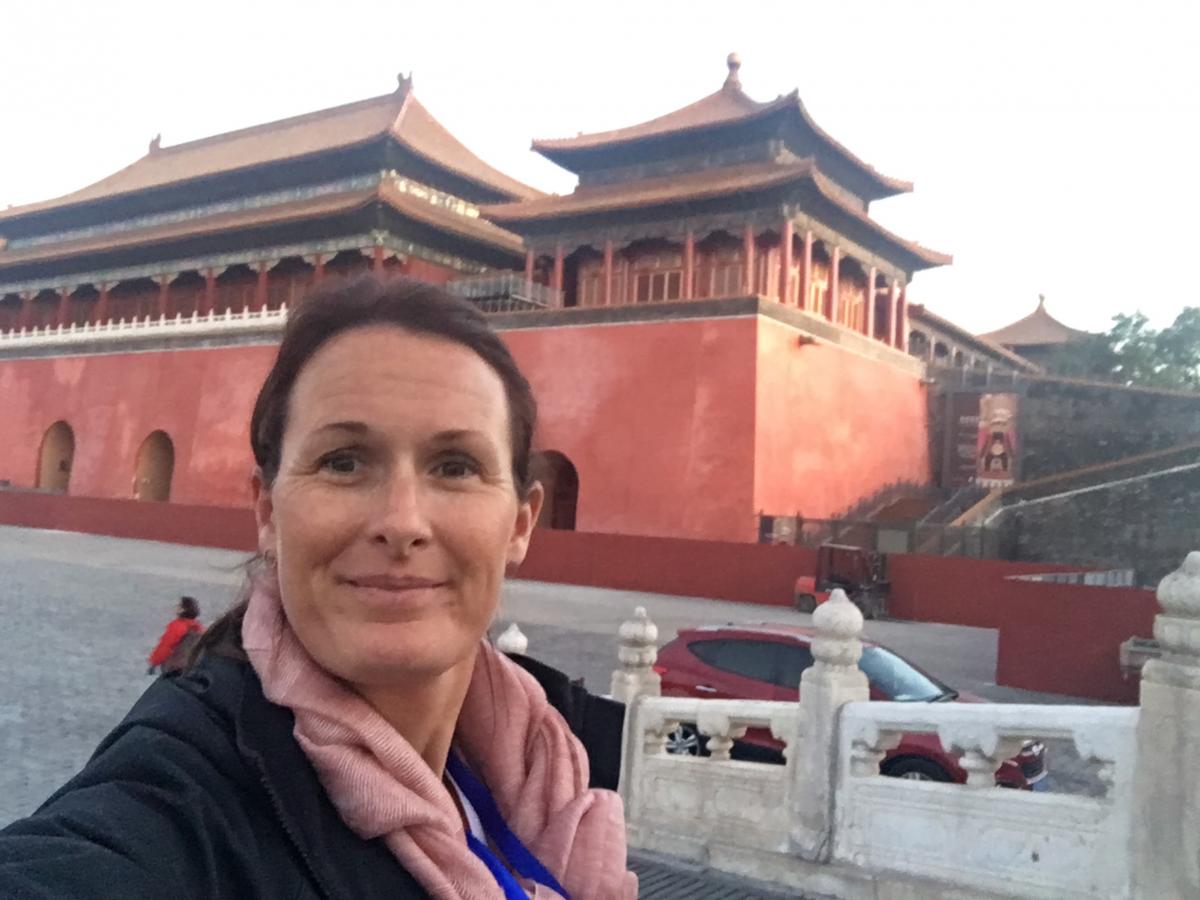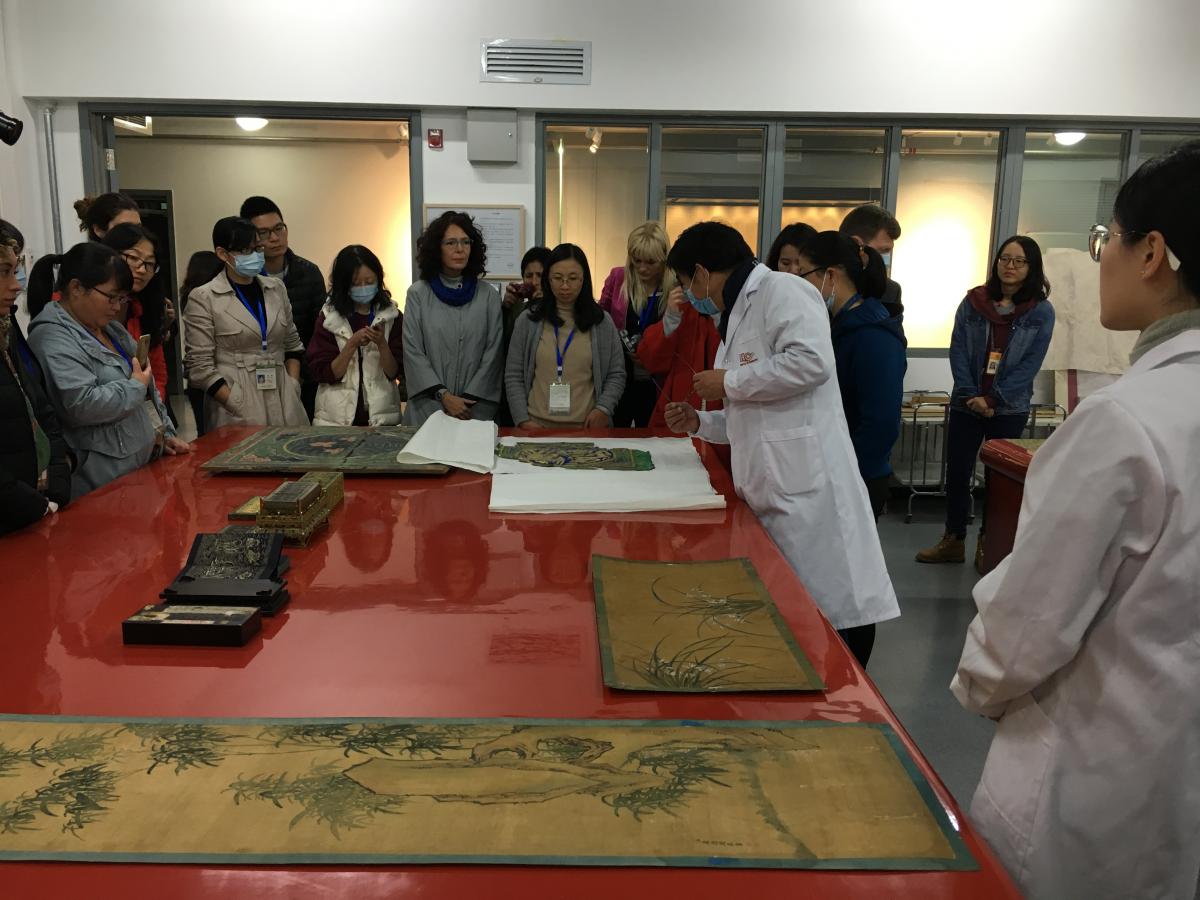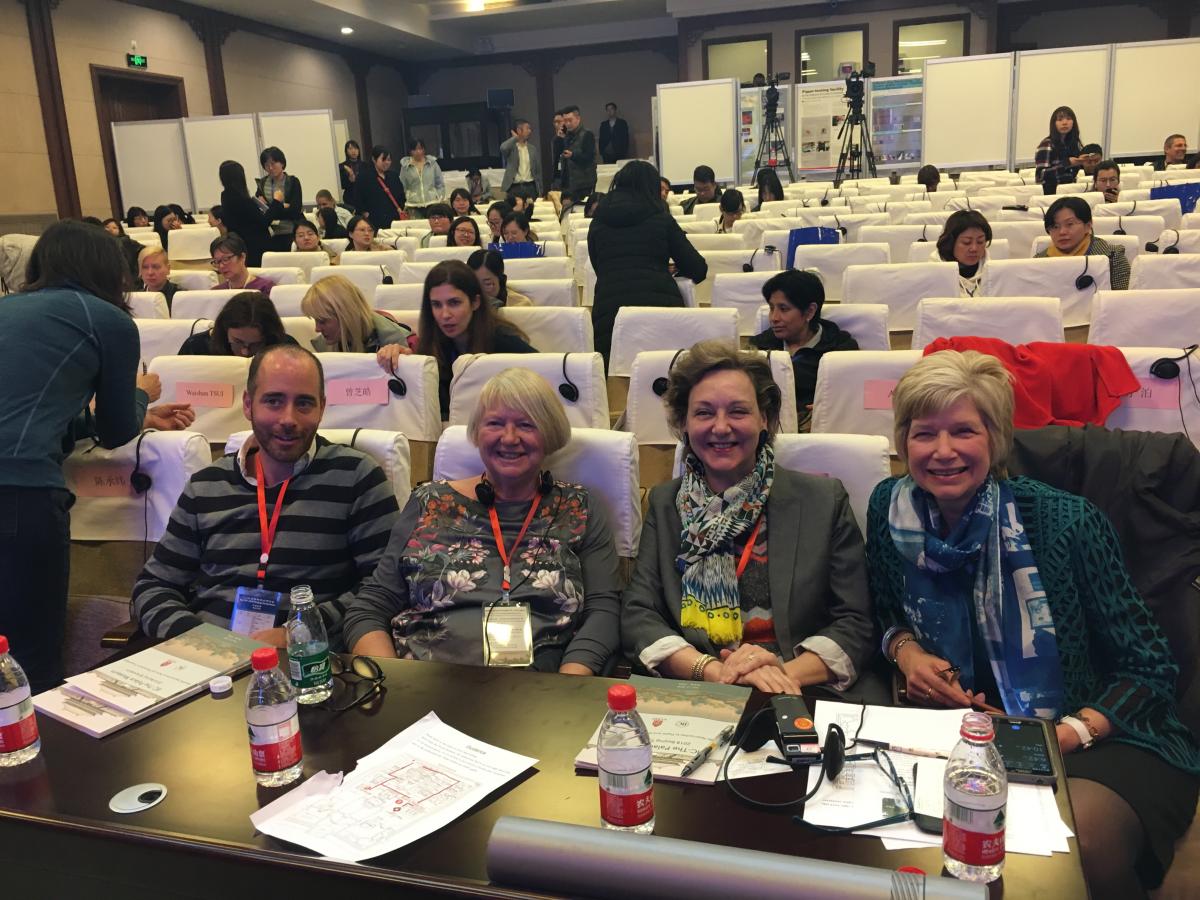Scientific Analysis of Paper and Photographic Materials Workshop
The Palace Museum, Beijing
22 October – 2 November 2018
Little did I know when I sent through my application for a place on the IIC-ITCC’s Workshop on the Scientific Analysis of Paper and Photographic Materials, that I would actually be lucky enough to be offered a spot! The workshop, to be held at the Palace Museum in Beijing, would play host to 24 conservators from around the world (12 International and 12 Chinese).
As one can imagine, it was an amazing experience to be based within the historic walls of the ‘Forbidden City’ for 11 days, and indeed to spend time at the newly opened state of the art Palace Museum — Conservation Hospital, which employs close to 200 staff working across a range of conservation specialisations


At the Welcoming Ceremony on Day 1 of the workshop, Dr. Shan Jixiang, Director of The Palace Museum, presented a wonderful talk on the significant changes The Palace Museum has undergone in recent years rejuvenating this World Heritage site which is visited by 16 million people annually. Dr Jixiang’s commitment to engaging local communities via digital engagement strategies and other outreach programs was particularly interesting. Dr. Song Jirong, Head of the Conservation Hospital, also presented a fascinating talk on the building of the new conservation facility, focusing on the objectives of The Palace Museum to be a centre of excellence in the conservation of a wide range of specialisations ranging from calligraphic paintings through to jade, clocks, ceramics, textiles and particularly the field of conservation science.

During the course of the workshop itself, participants had the unique opportunity to learn from some of the most influential minds in conservation. Over days 2 & 3, Sarah Staniforth (President of the International Institute for Conservation/IIC) presented a number of thought provoking talks on the topic of Preventive Conservation – particularly the 10 agents of deterioration, and how they affect collections the world round to varying degrees. As part of a preventive practical session, participants had the opportunity to work in teams, monitoring and assessing the environment within exhibition spaces at The Palace Museum. The results of this session were shared and discussed within the group, providing for some unique learning outcomes.

Parallel to the Preventive sessions, Austin Nevin (Conservation Scientist & Researcher at the Institute of Photonics and Nanotechnologies at the Italian Research Council in Rome), presented a number of talks on the topic of non- destructive analysis of paper and photographic material. What was great about this session was Austin’s focus on the more widely available analytical techniques such as stereo & polarised light microscopy. Participants also had the opportunity to visit the scientific laboratories of the Conservation Hospital, and observe the operation of FTIR, portable XRF, Ramen, Multispectral Imaging equipment to name but a few, as presented by in-house conservation scientists. For many participants this was a unique opportunity to see such equipment in action, and understand their applications and relevance in the field.
On day 4 – Juergen Vervoorst (Head of Collection Care and Conservation at the National Archives, London), presented a series of stimulating talks on the fundamentals of library and archives conservation. As part of the talks, Juergen incorporated a number of fun and thought provoking games – designed to get conservators thinking about the value of cultural material, and the significance of ‘context’. Jurgen also touched on how archives are changing in this ever more ‘digitised’ world, and how the profession needs to adapt to these changing needs.
Over days 5 & 6 Margaret Holbein Ellis (President of the American Institute for Conservation/AIC & Professor of Paper Conservation at the Institute of Fine Arts, New York University), presented a series talks on the Fundamentals of Paper Conservation. With so many years of experience, it is no wonder Margaret has such a charismatic and engaging manner, and her talks left everyone in the room wanting more. Margaret reminded us of how the simple tests of sight, sound, touch and small – combined with our experience, can tell us much more about paper than any analytical technique. Her talks were refreshing and revitalising, and reminded us of why we do what we do.
Day 7 offered the group the opportunity to visit one of china’s most cherished and revered sights The Great Wall. Conservators spent the day walking the wall and reflecting on the importance of cultural sights, and indeed the relevance and meaning of culture to people the world round.
Just when I thought there was no room left for further inspiration, Deborah Hess Norris (Professor of the Art Conservation Department at the University of Delaware — & author of over 45 books/publications relating to the conservation of photographs), entered the equation on days 8 & 9, and shed a new light on the topic of photographic conservation. This tricky area, which so many paper conservators feel slightly inadequate in, was beautifully simplified by Debbie, who like Margaret is a master of communication. Running through the timeline of photographic processes, Debbie focussed on the later 19th early 20th century processes of gelatin, albumen and collodion printing. As part of her workshops participants had the opportunity to discuss works and condition issues within their own collections, and ways to improve on current methods of care. Debbie brought a suitcase full of photographs for examination, which after extensive study, left conservators feeling a lot more confident about their identification skills.
To say it was a great privilege to have had such close contact with these professionals who have contributed so much to the development of the profession over the years would be an understatement. It was genuinely so inspiring to hear from these specialists whose passion for conservation is undeniable and utterly contagious.
The workshop was subsequently followed by a 2 day Symposium (days 10 & 11), at which an even larger group of pioneering professionals from around the world presented talks on the development of the fields of both paper and photograph conservation. Speakers included the Idelette van Leeuwen (Head of Paper Conservation at the Rijksmuseum), Gu Xiangmei (Head of Chinese Painting Conservation at the Freer & Sackler Galleries/Smithsonian Institute, Washington), Ari Ide (Senior Professor of Science & Technology in Art, Kyoto University) & Bertrand Lavedrine (Professor at the National Museum of Natural History, Paris, France & Co-ordinator of the ICOM-CC Photographic Group), to name but a few. The Symposium brought together the most current research in the fields of paper and photograph conservation from Cultures East and West, and provided a unique platform for future research and possible collaborations.
The opportunity to attend the IIC-ITCC training workshop & symposium, afforded me the opportunity to establish meaningful relationships with Conservators from Institutions around the world including: Mexico, Peru, Serbia, Prague, Greece, Ukraine, Norway, Croatia, Italy, USA, Korea, Hong Kong and Singapore and a number of conservators from the major institutions within China. All in all, it was an incredible experience both professionally and personally and reminded me of the importance and value of engaging & sharing stories and experiences with conservation colleagues.


I would like to extend a heartfelt thanks to both the IIC and the Palace Museum, for respectively facilitating and hosting this event. A particular thanks to Sarah Staniforth, whose dedication to organising this event, ensured its success. Fully funded opportunities like this are so rare, I feel both fortunate and privileged to have been able to be a part of this terrific and life changing experience. I would also like to acknowledge the wonderful conservators from all over the world that attended, who I now see as not just colleagues but friends! I would encourage anyone who has ever thought opportunities like this are ‘too good to be true’ — to throw your hat in the ring, because you just never know what might happen.